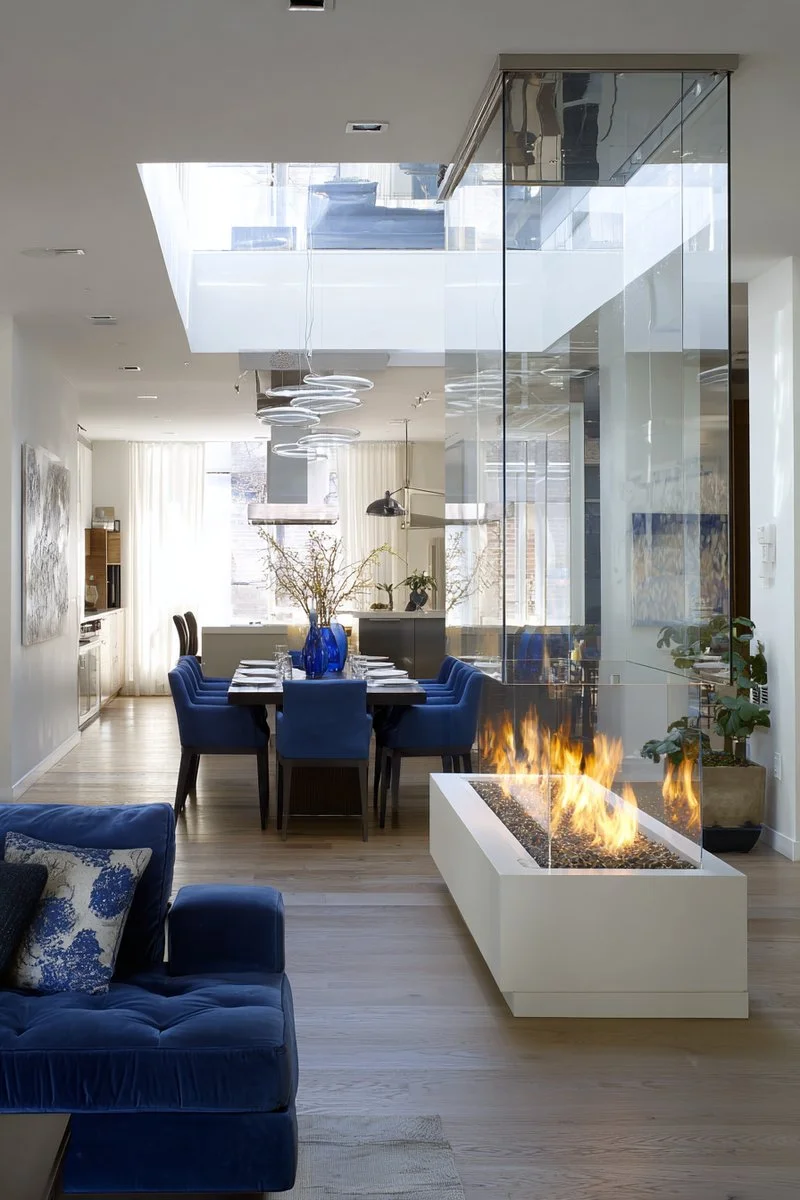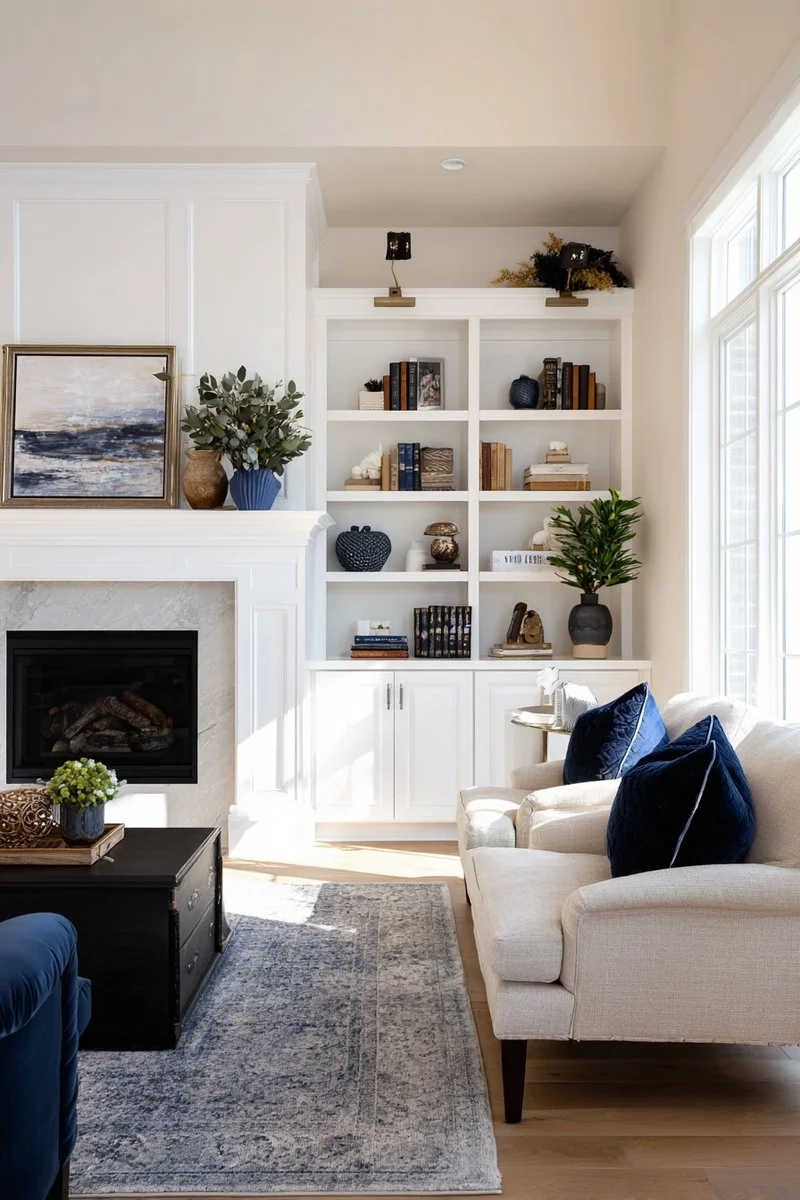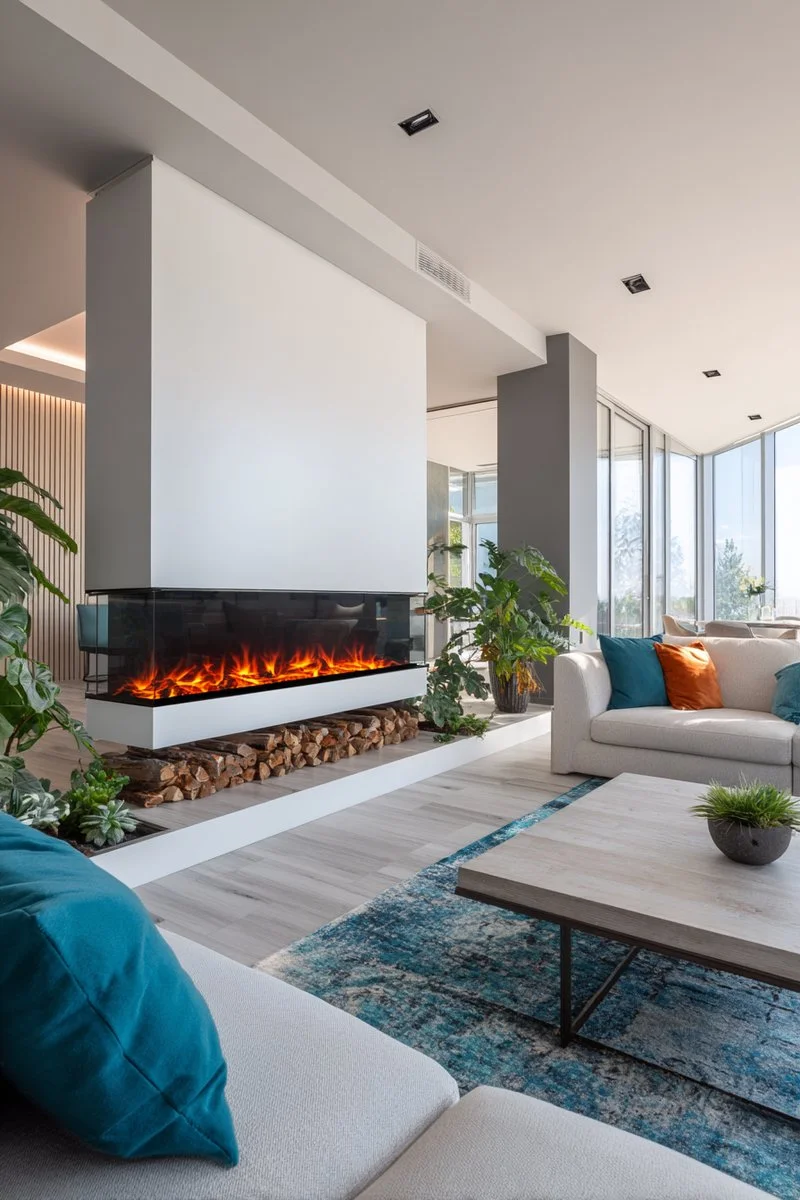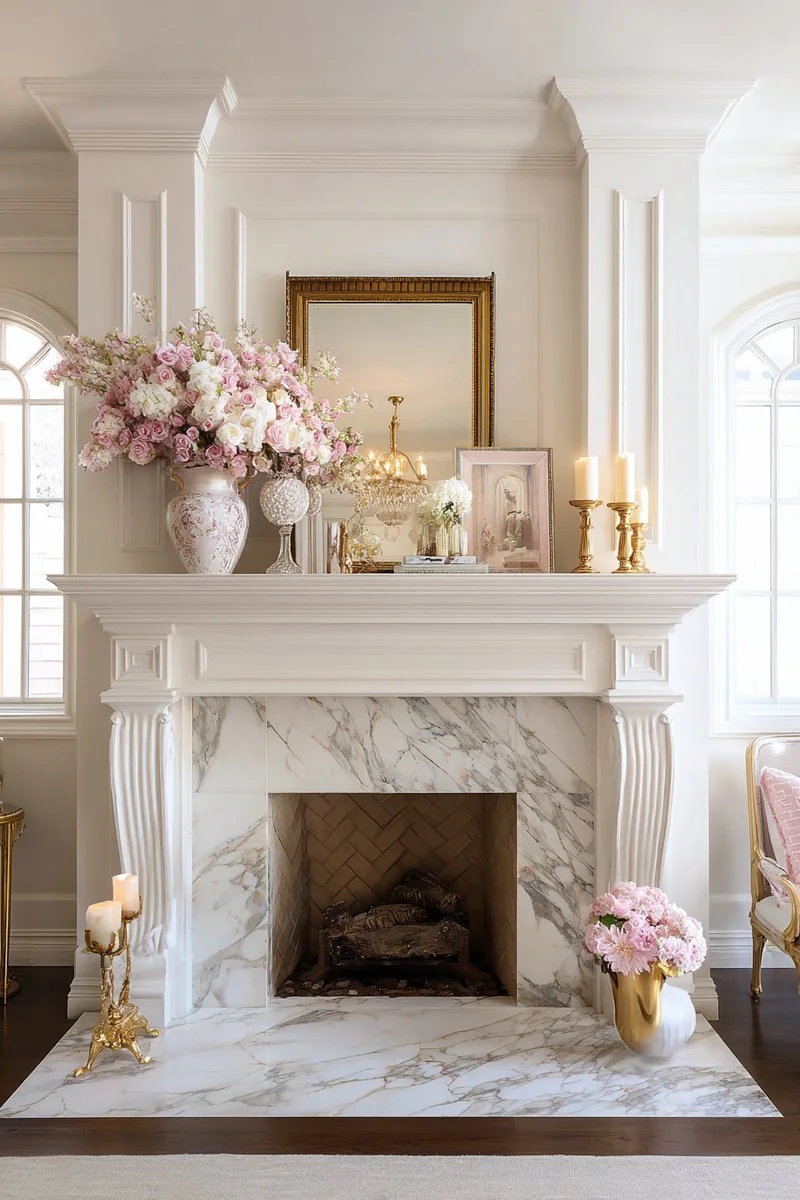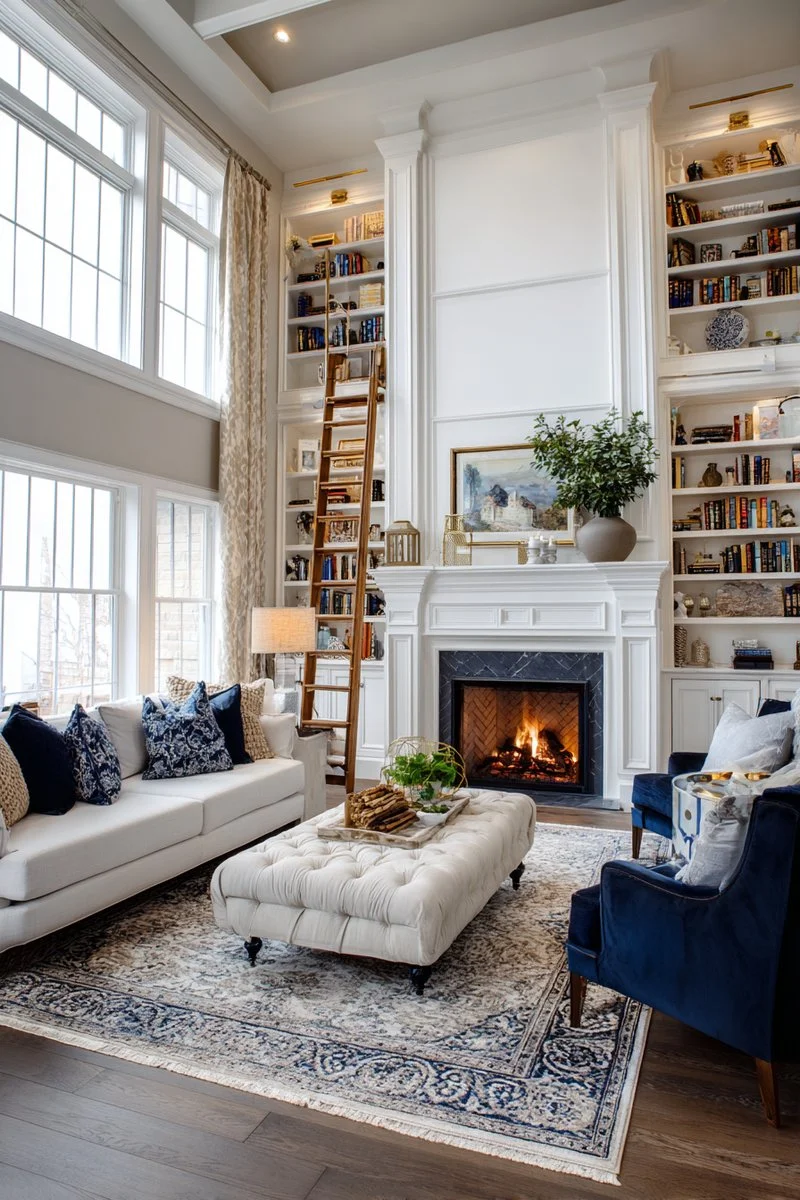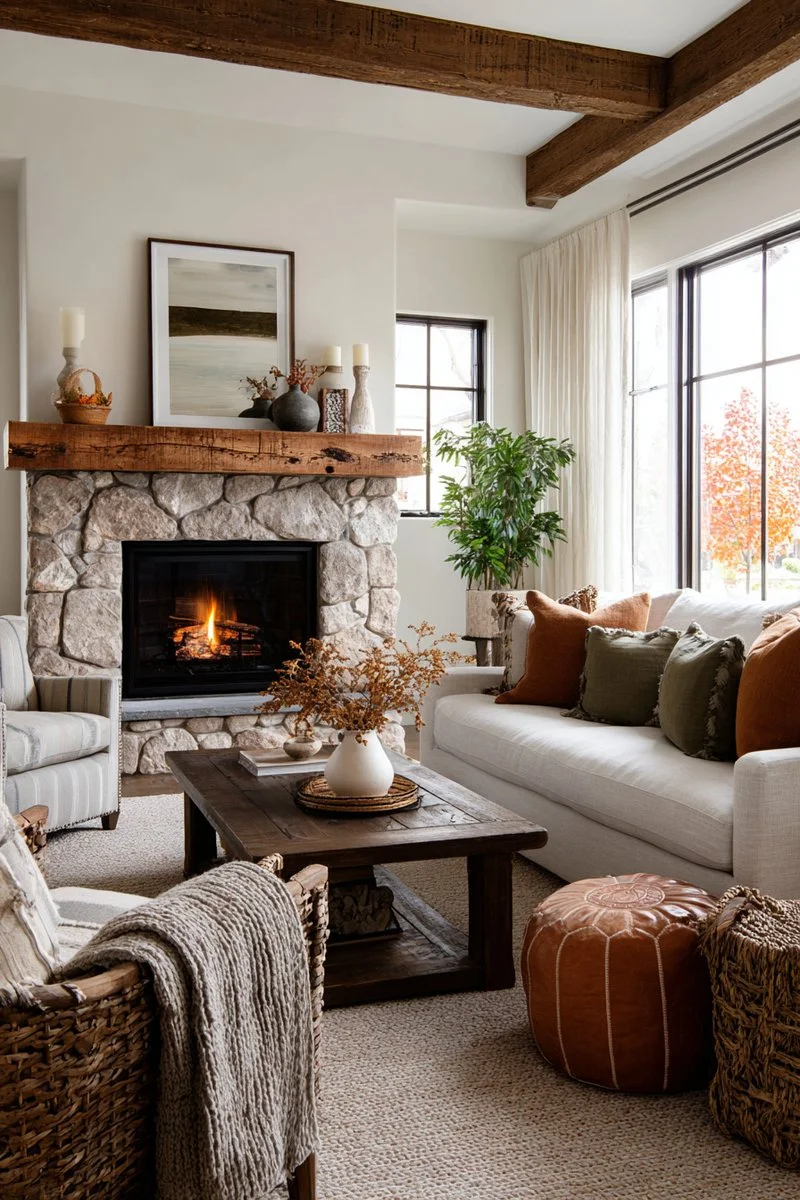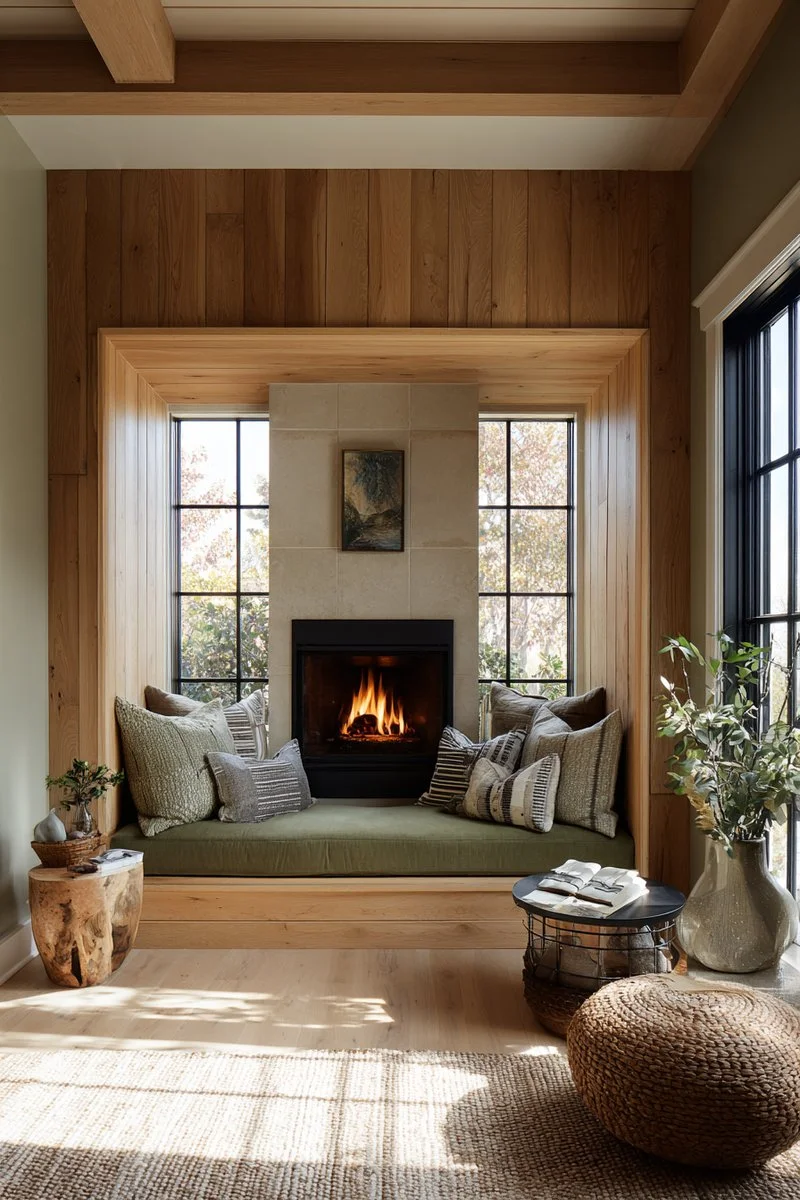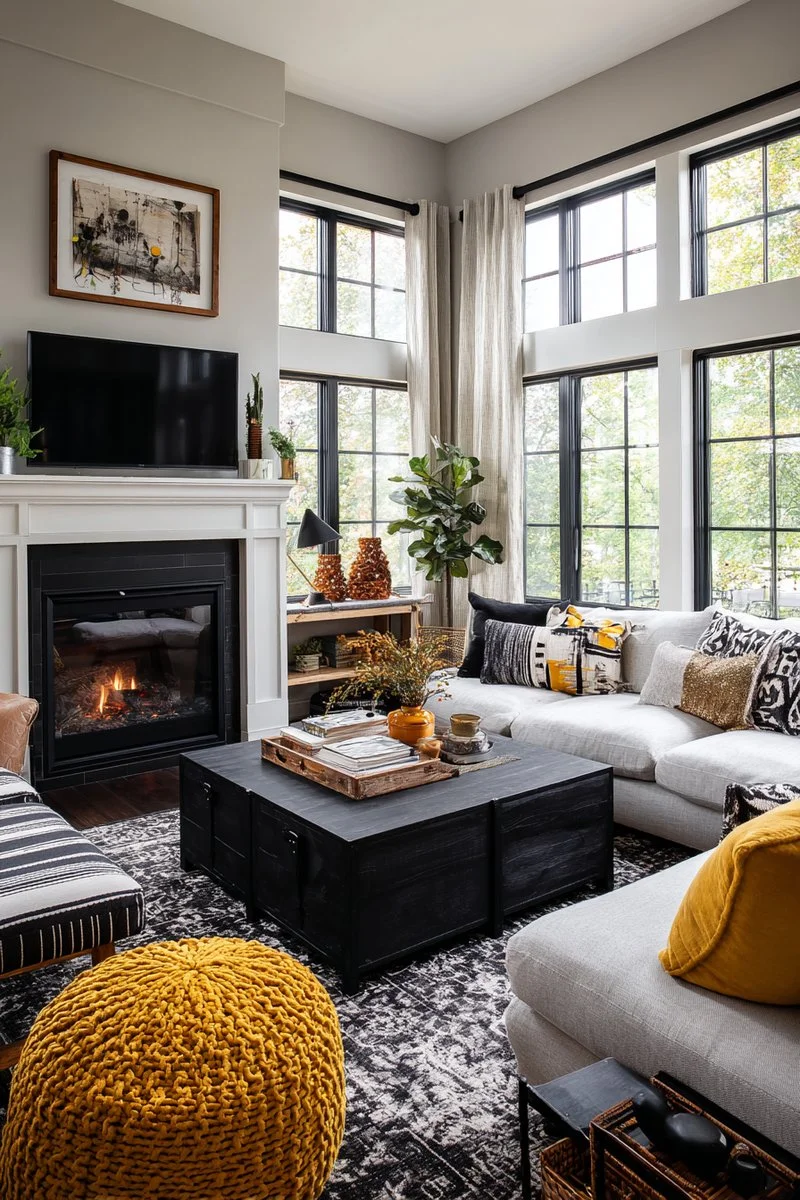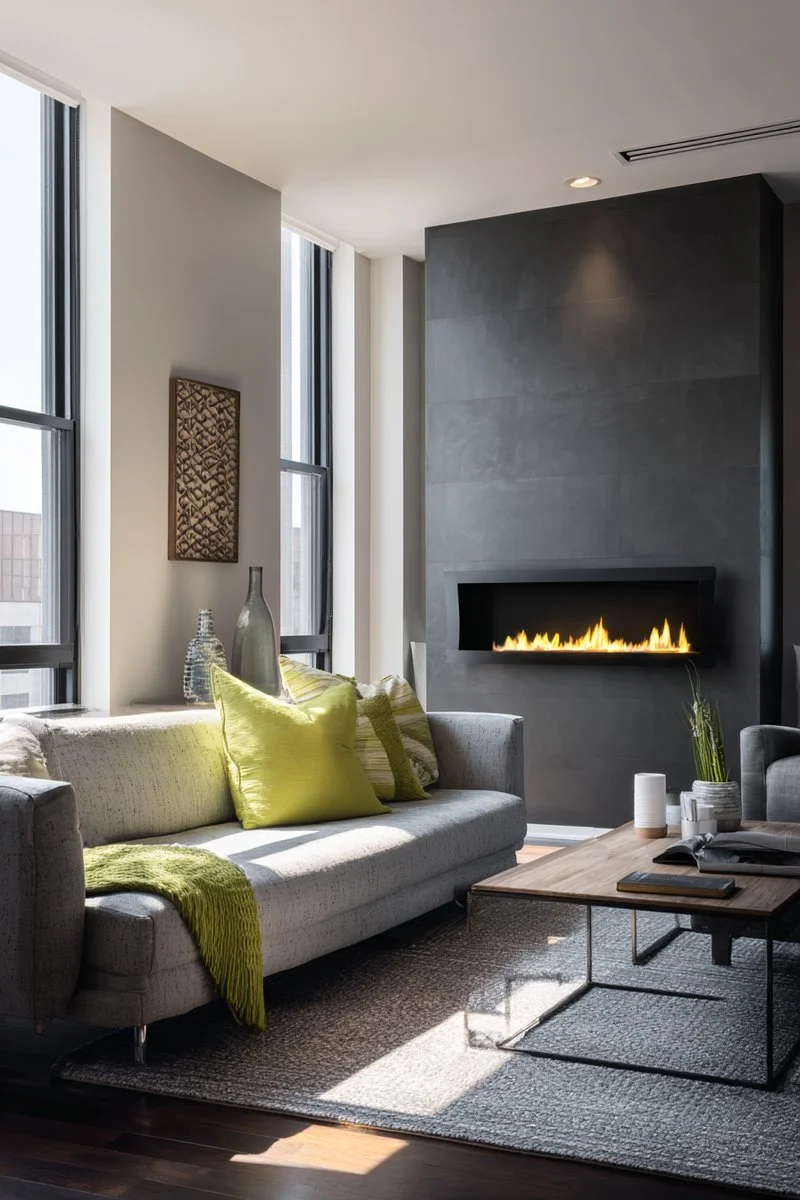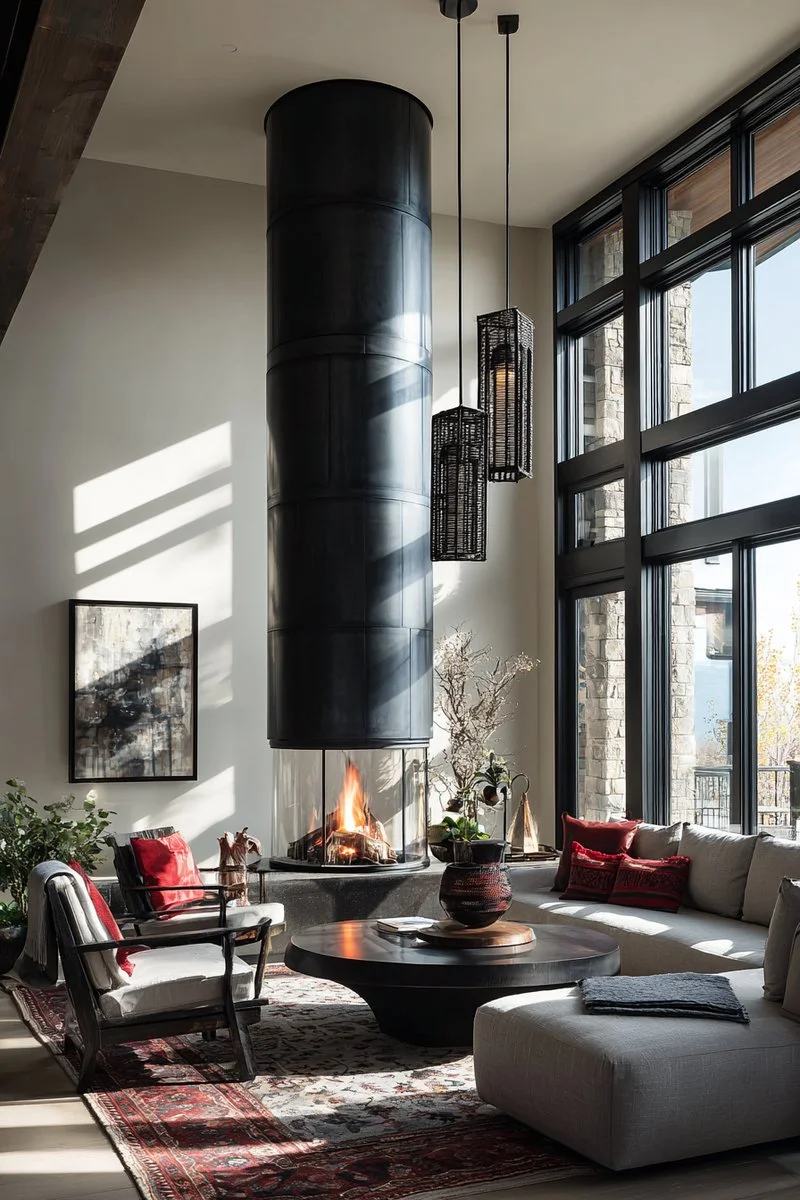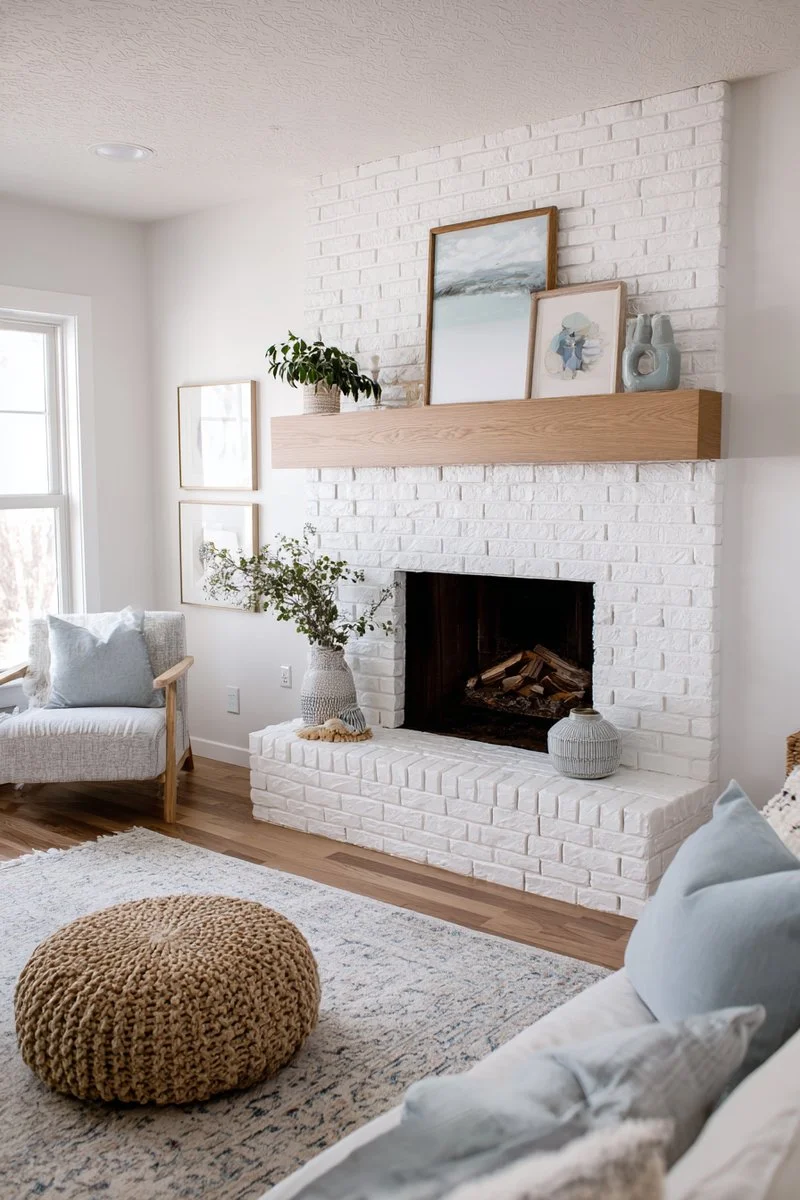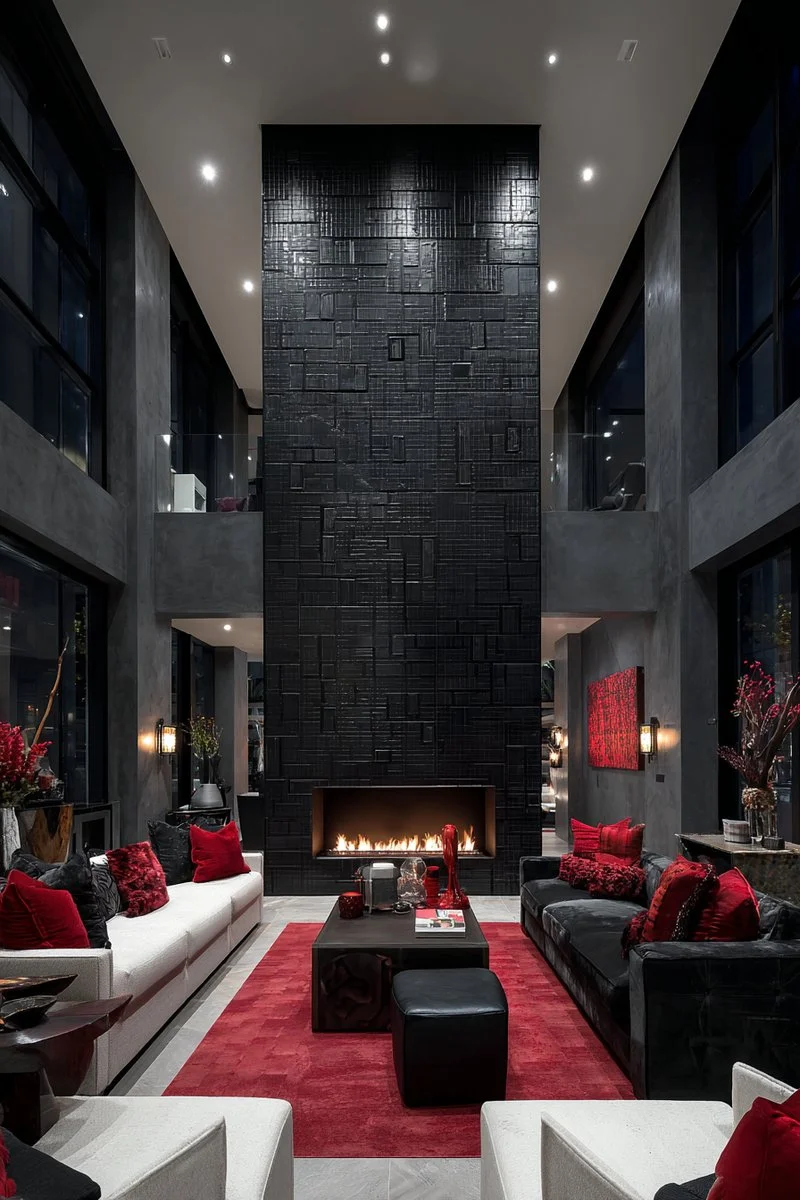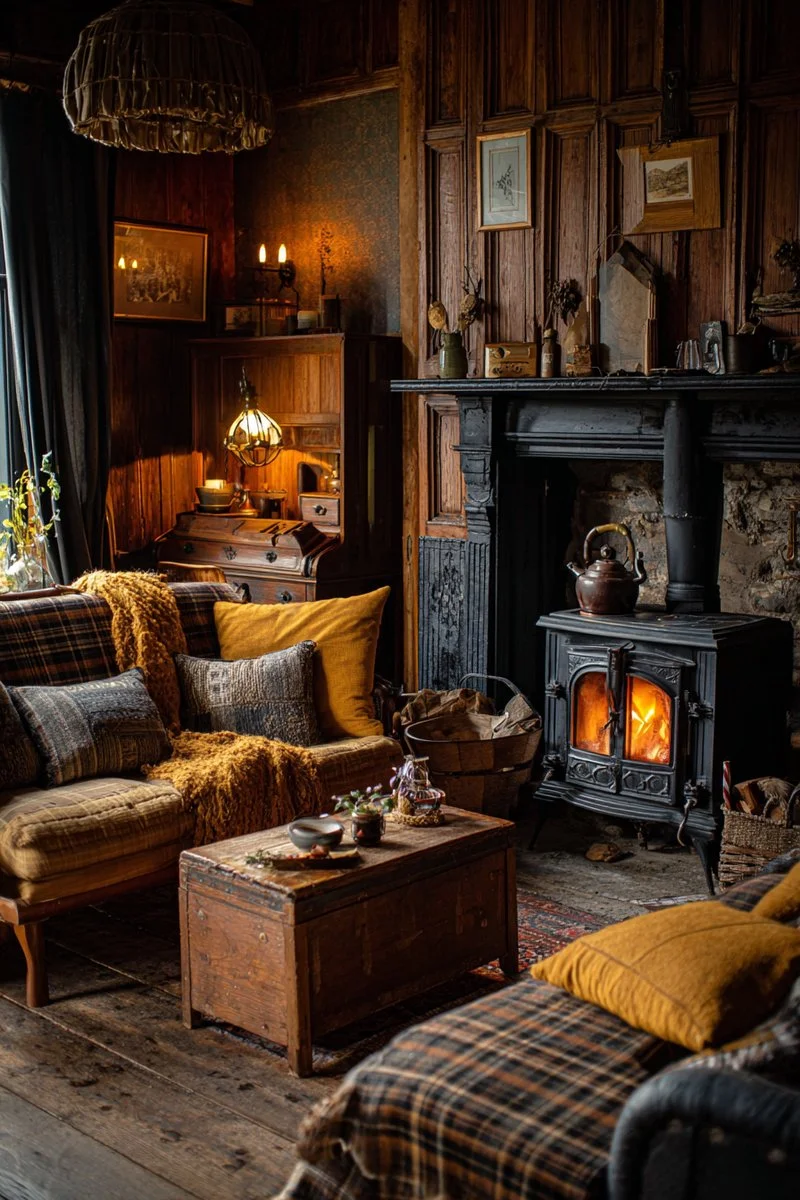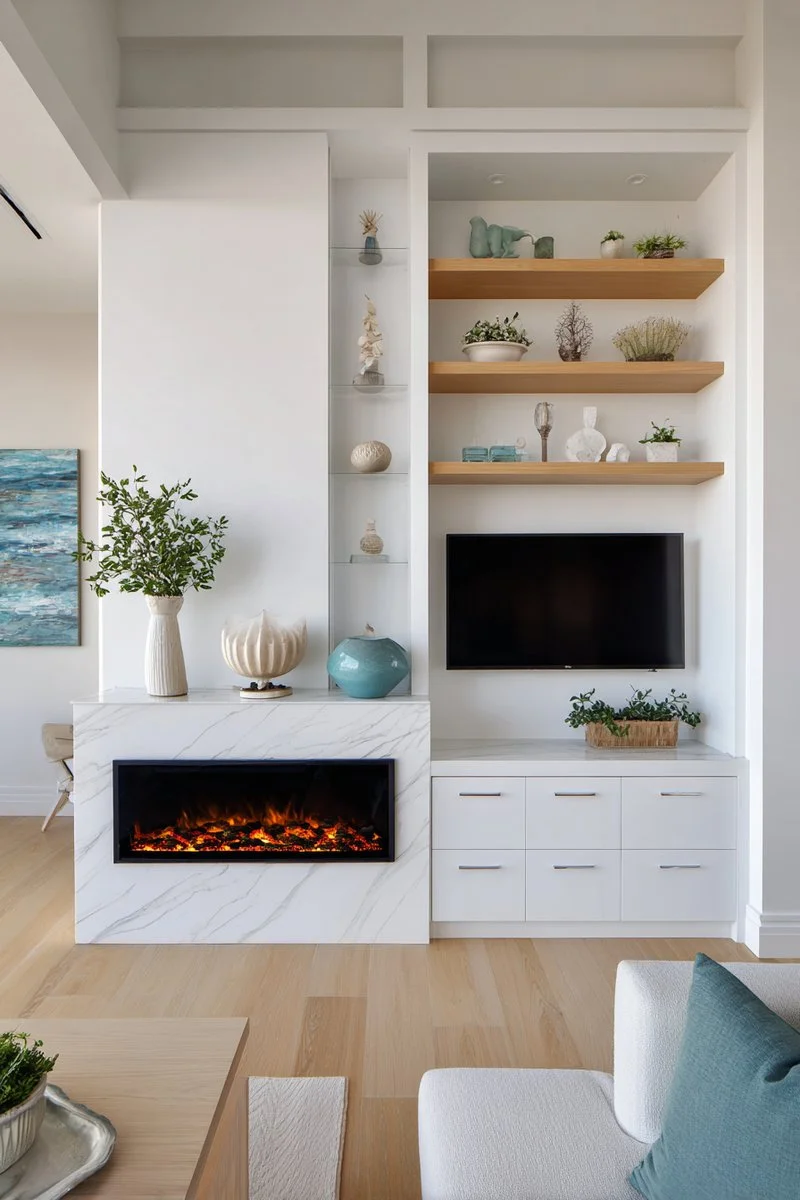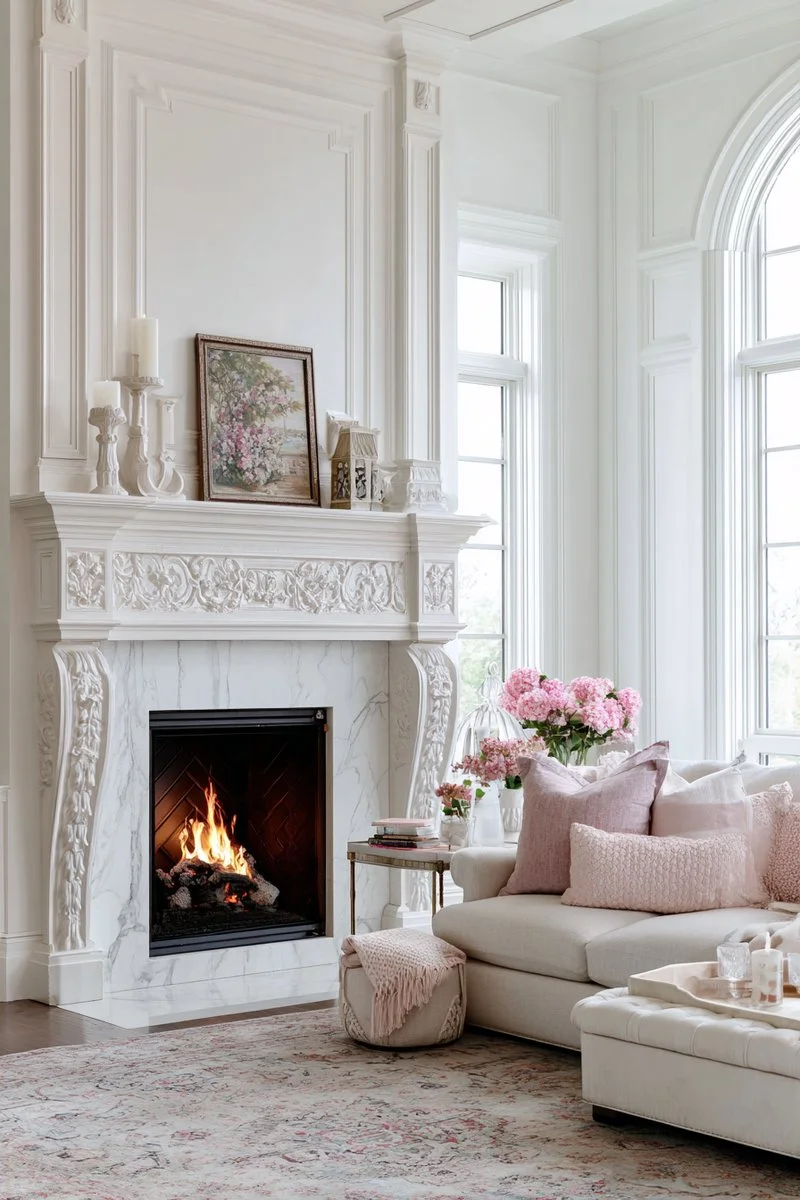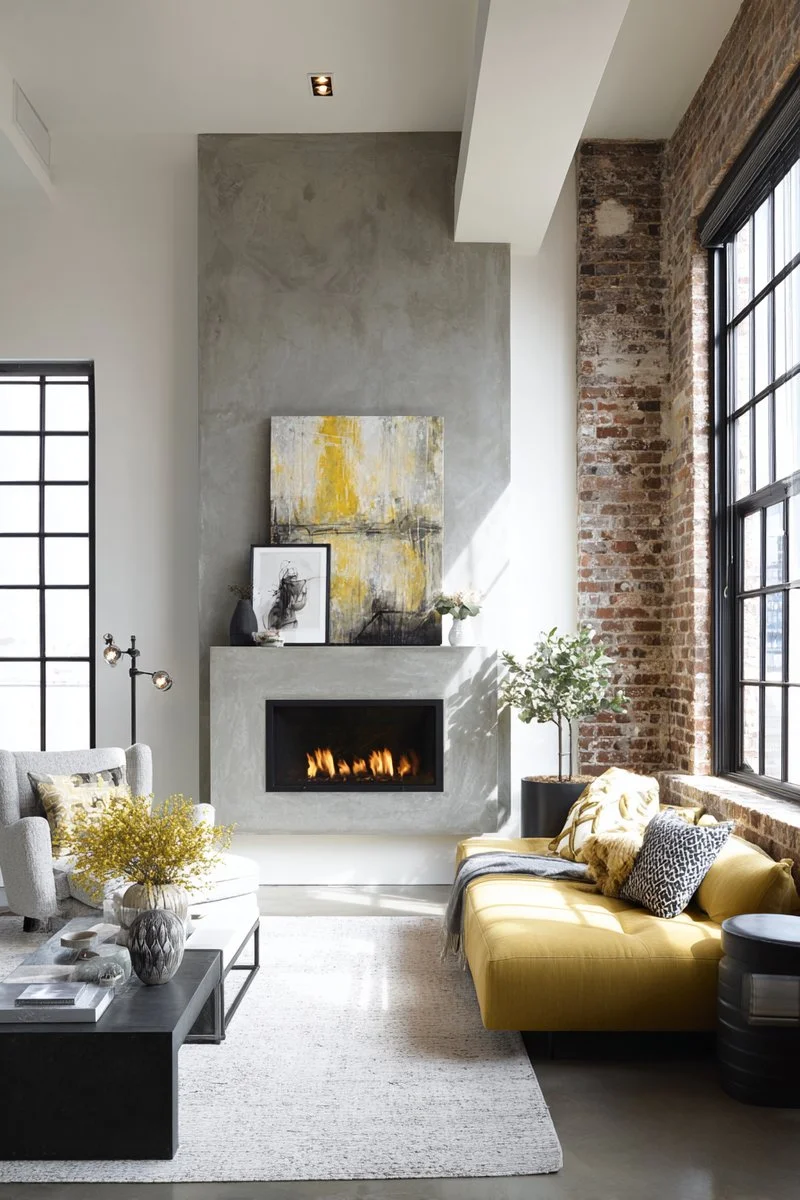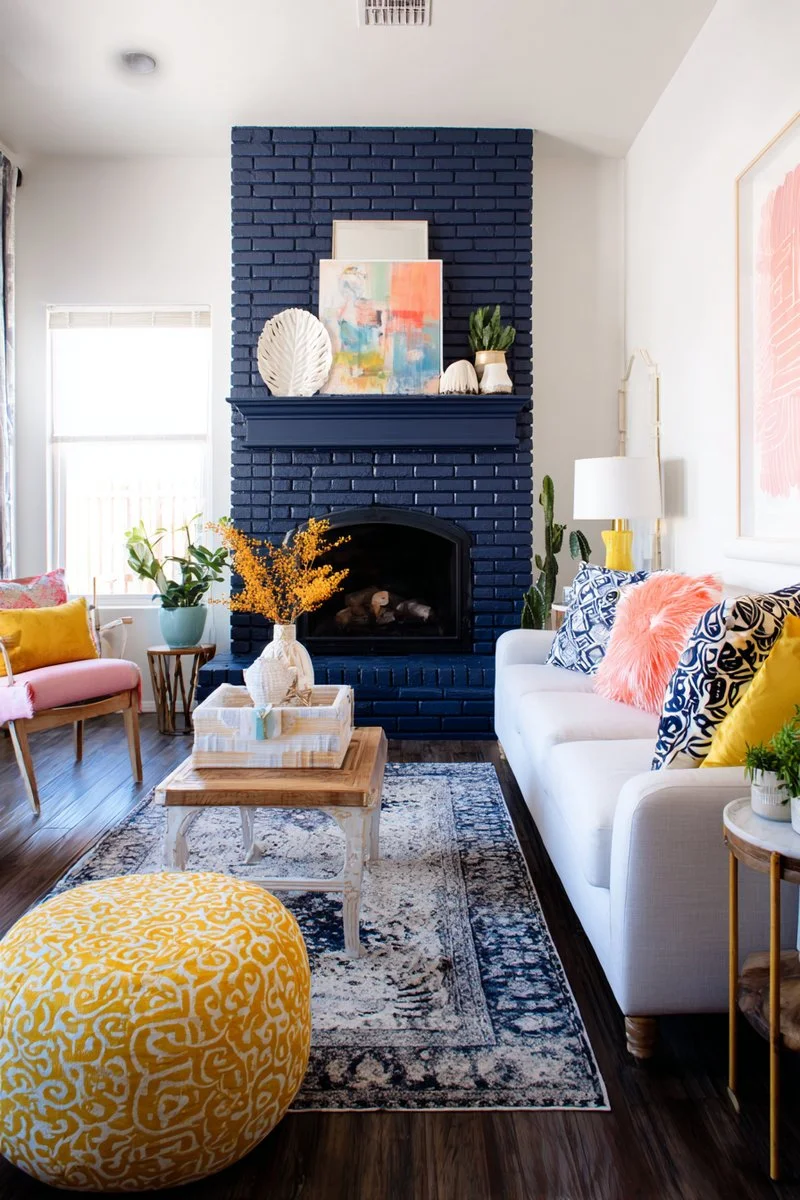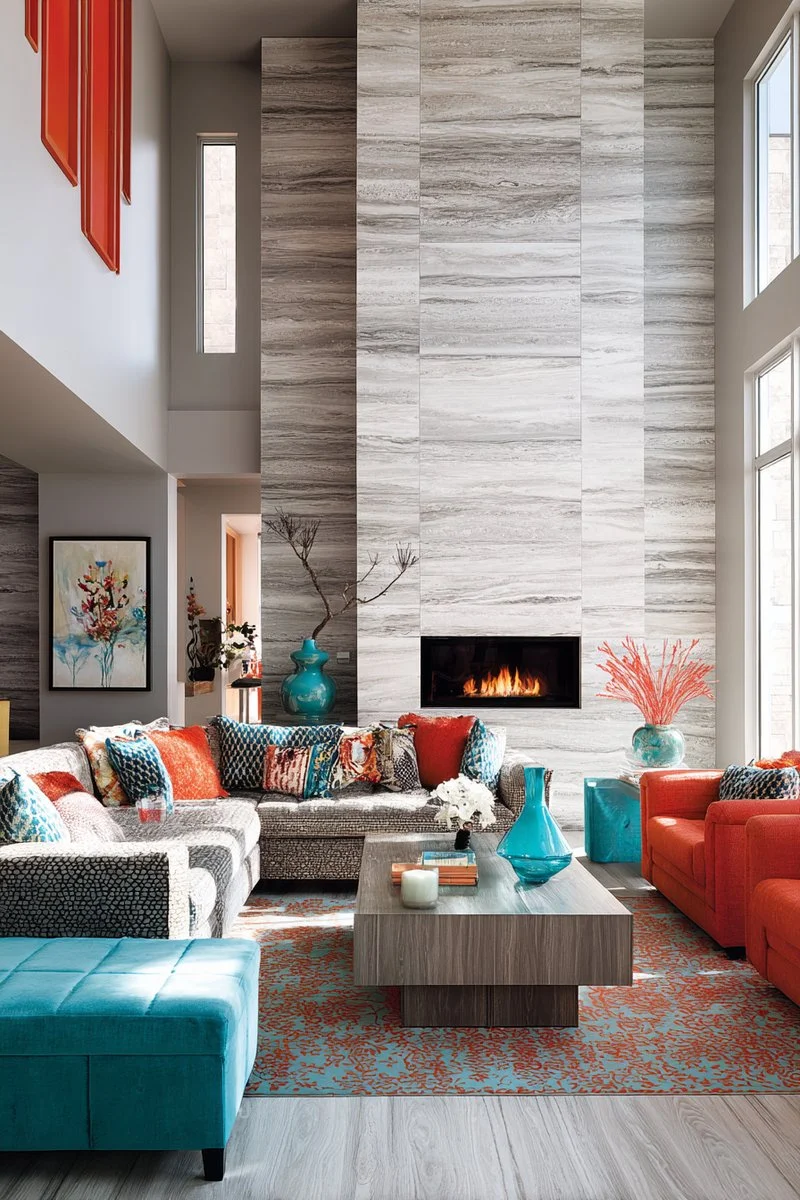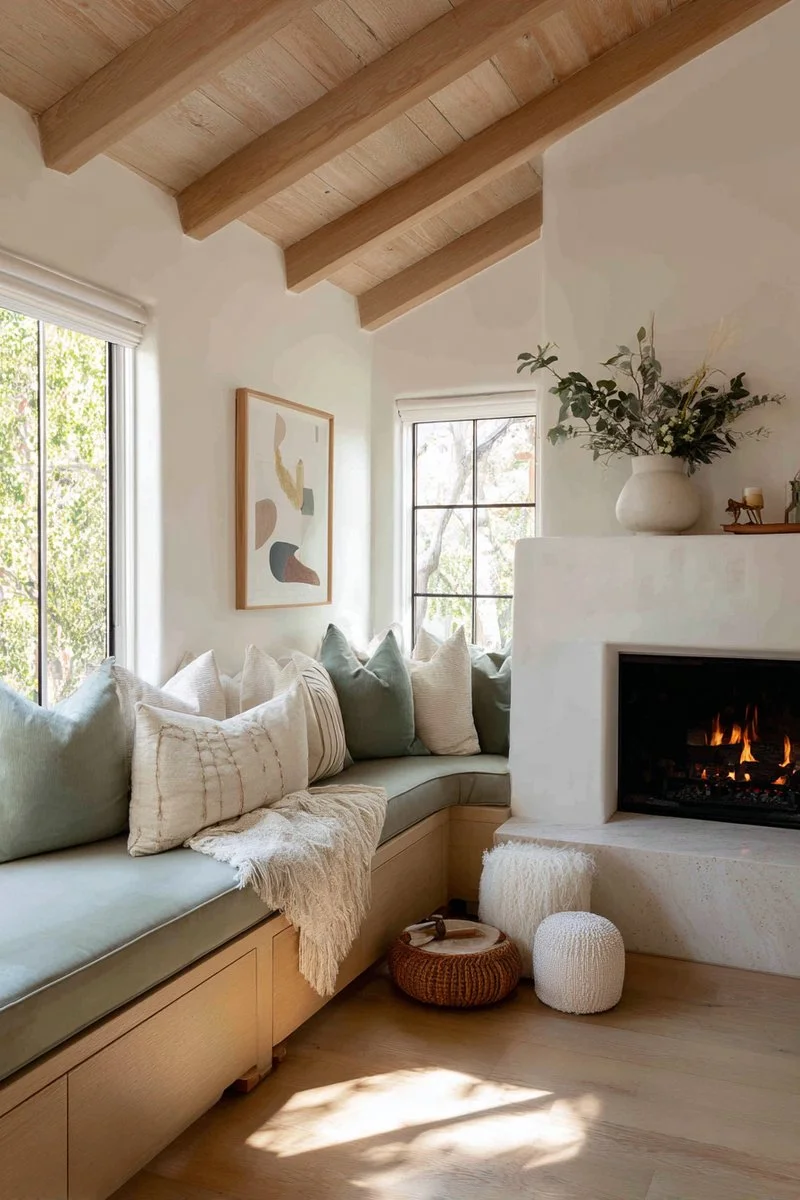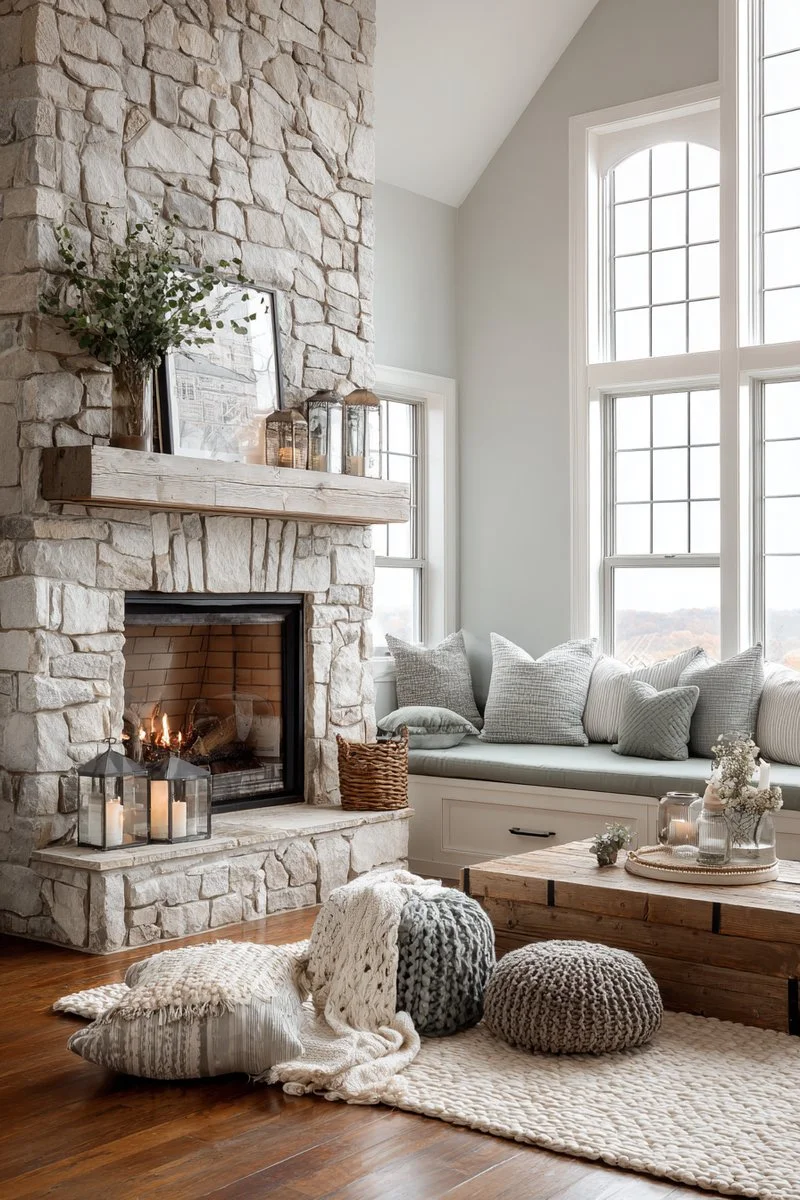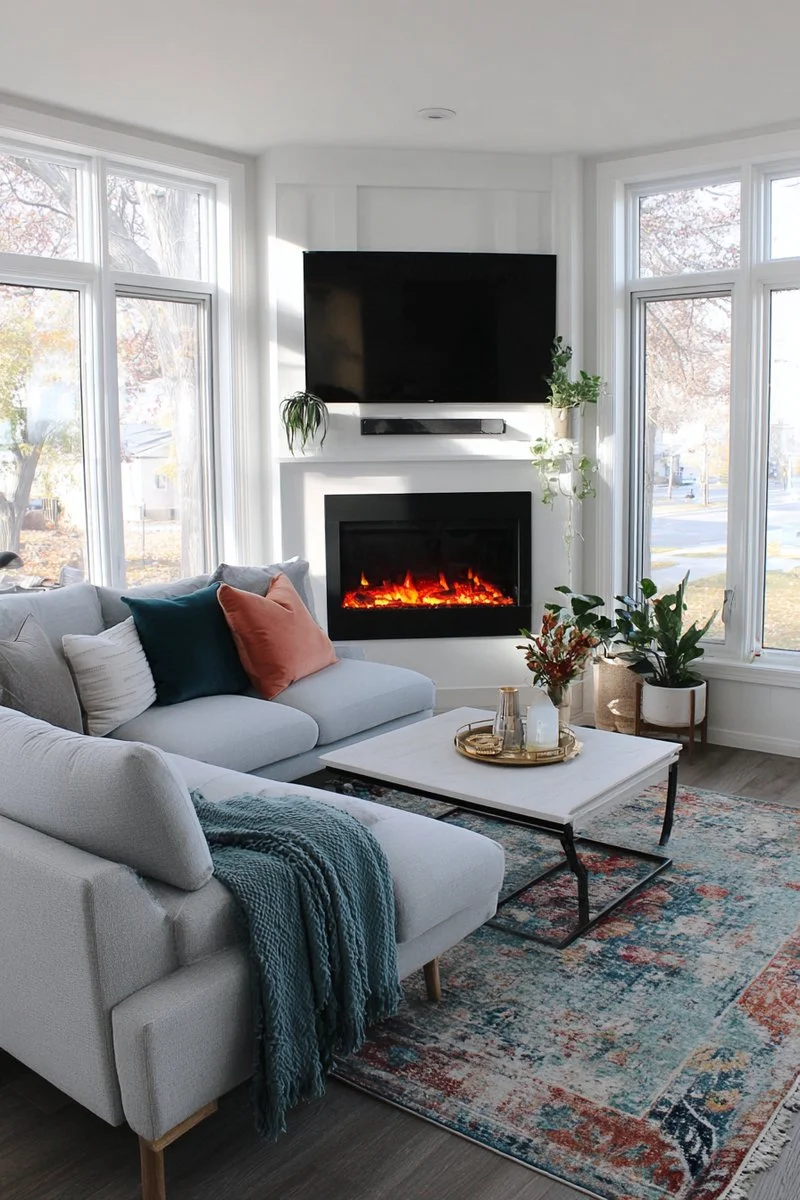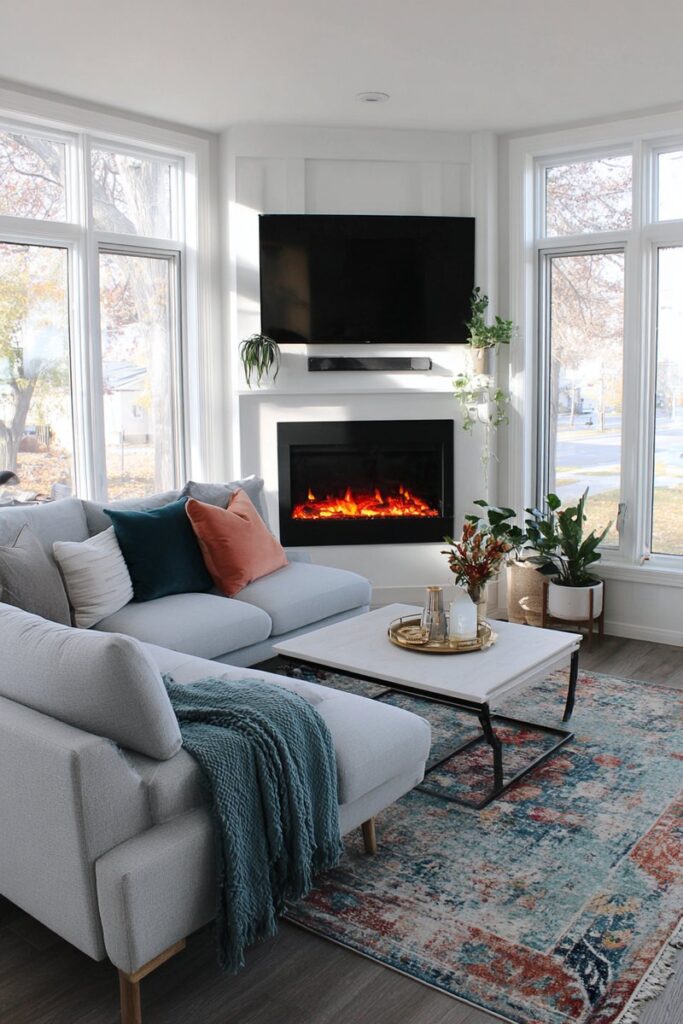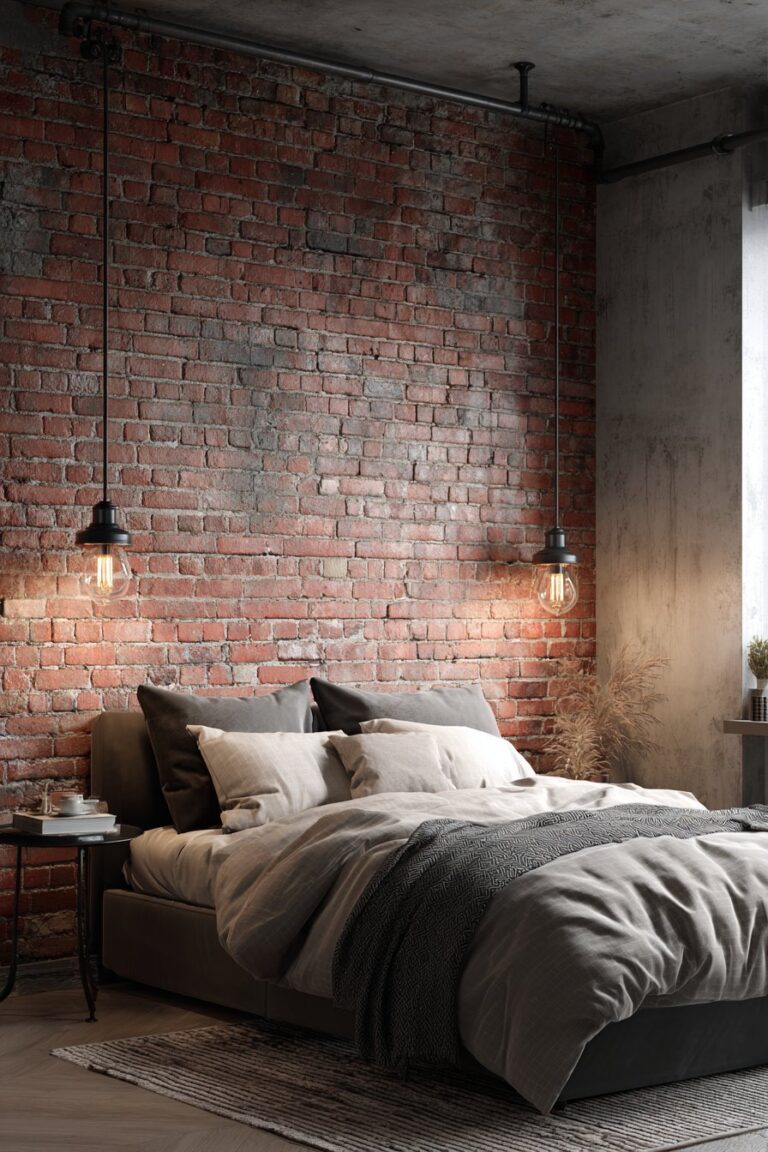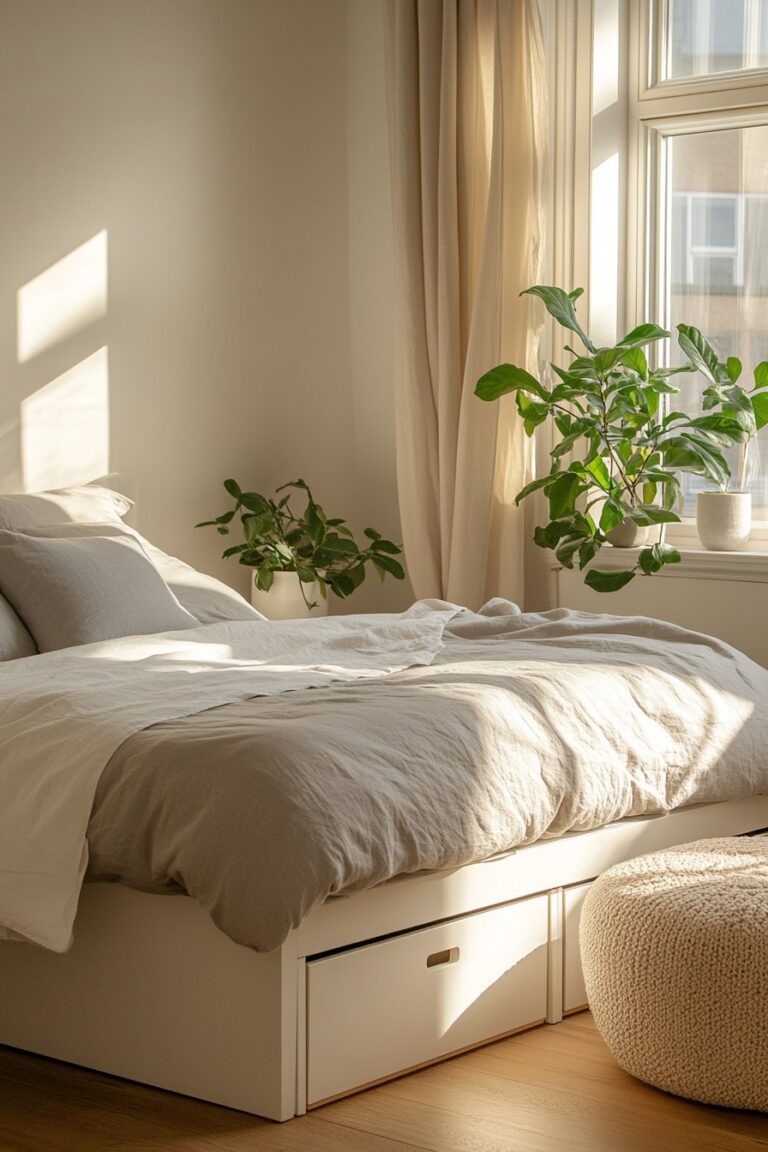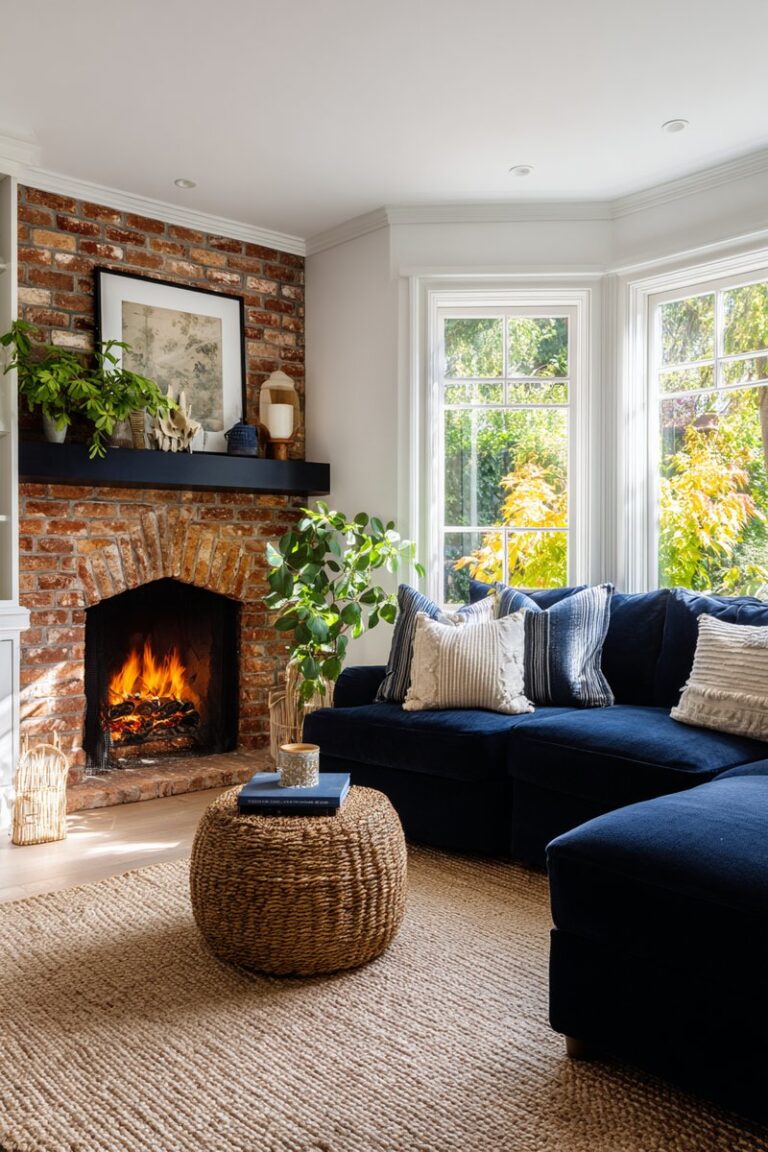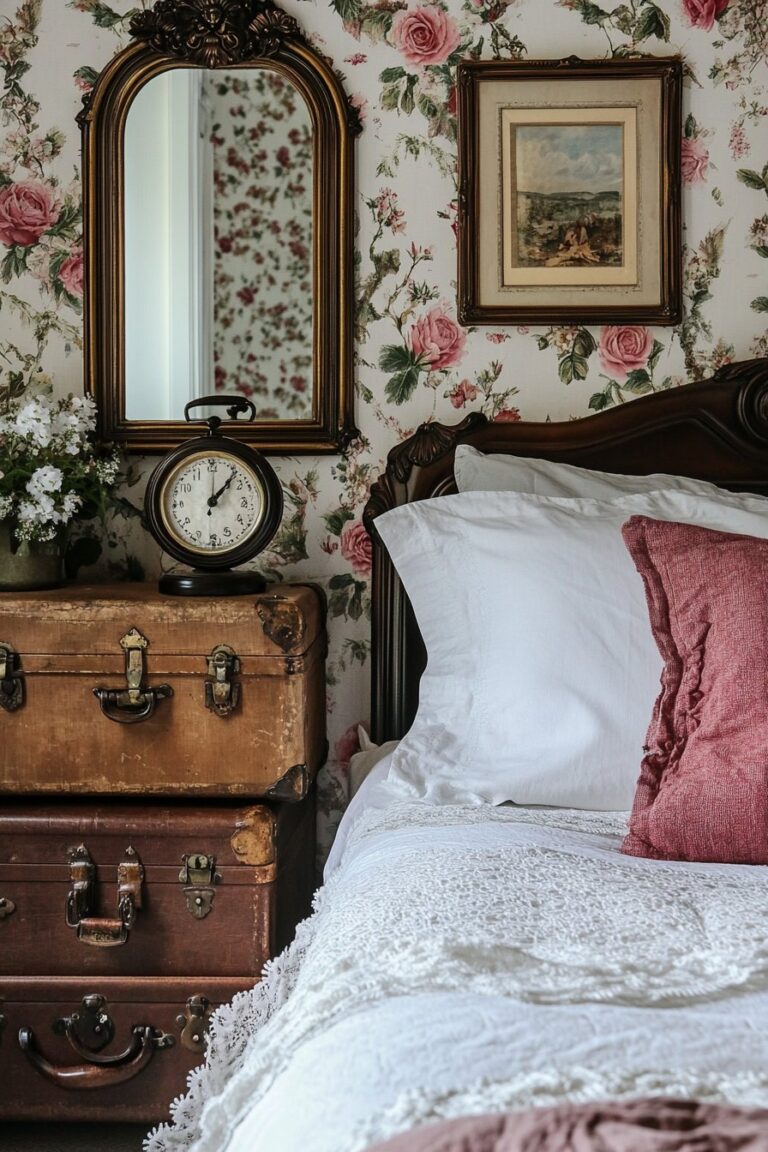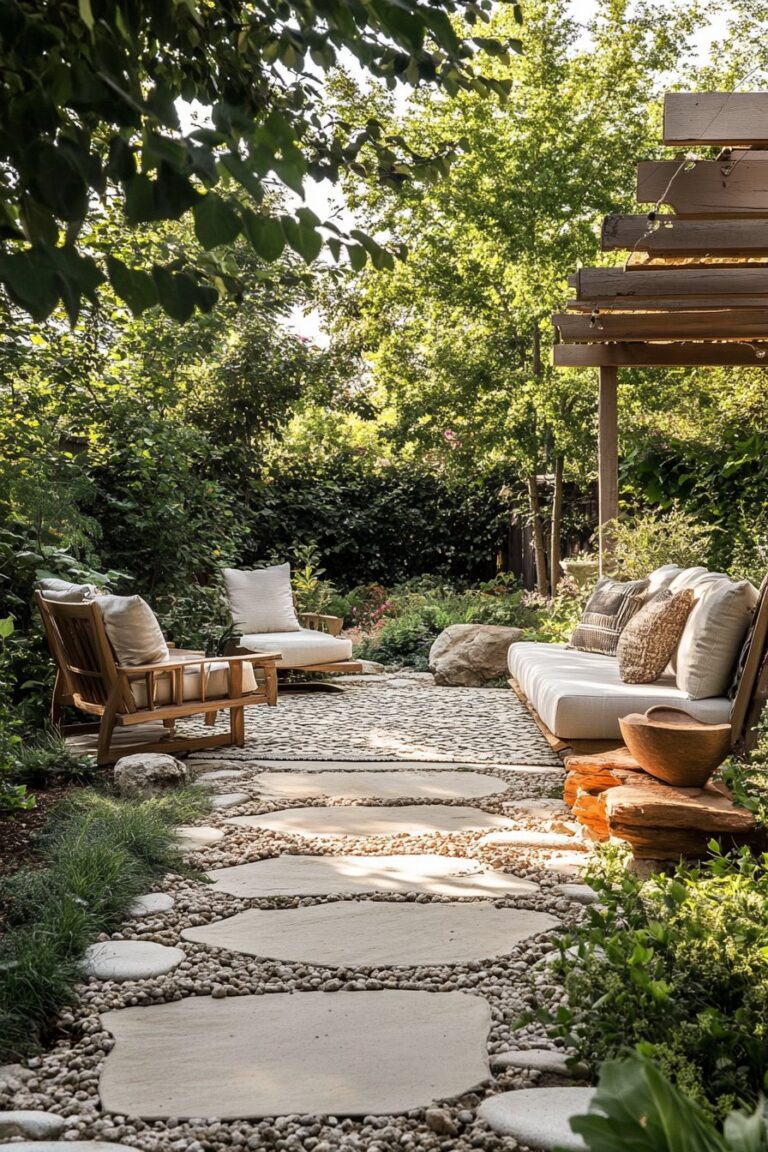Imagine a chilly evening. You’re curled up with a good book or enjoying laughter with loved ones. What element instantly elevates that scene from pleasant to truly magical? More often than not, it’s the warm, flickering glow of a fireplace. A fireplace isn’t just a heat source; it’s the heart of a living room, a natural gathering spot that radiates comfort and charm. Choosing the right one, however, requires thoughtful consideration of style, space, and function. That’s precisely why exploring 20 Cozy Fireplace Ideas to Transform Your Living Room in 2025 is essential for anyone looking to enhance their home’s most central space.
In this guide, we’ll explore a diverse range of fireplace concepts, from timeless wood-burning hearths to sleek, modern electric units and eco-friendly ethanol options. You’ll gain insights into various styles, materials, and innovative features trending in 2025, helping you envision the perfect focal point for your own living room sanctuary. We’ll cover everything from installation considerations and safety tips to integrating fireplaces into media walls and selecting the ideal surround material. By the end, you’ll be equipped with the knowledge and inspiration to make an informed decision and create a living room that’s not only beautiful but also deeply inviting.
Integrate a Built-In Electric Fireplace
Electric fireplaces have come a long way. Today’s models offer incredibly realistic flame effects and supplemental heat without the hassle of traditional fires. Integrating a built-in electric fireplace seamlessly into a wall creates a clean, modern look that fits beautifully in contemporary spaces. These units are perfect for apartments or homes where venting isn’t possible, offering flexibility in placement. For example, a linear electric fireplace built into a wall below a television creates a sleek media wall focal point without needing a chimney.
According to Jane Thompson, a lead designer at Hearth & Home Interiors, “Built-in electric units provide unparalleled design flexibility. You can install them almost anywhere, and the slim profiles mean they don’t take up valuable floor space. Furthermore, the ability to control heat and flame independently is a huge plus.” Consider adding custom cabinetry around the unit for storage, framing the fireplace and enhancing its presence. Installation is typically simpler and less costly than gas or wood, making it an accessible option for many homeowners.
Furthermore, many electric models offer color-changing flame options, letting you match the ambiance to your mood. This modern feature adds a playful touch to the classic fireplace concept. Often, you can even operate them via remote control or smartphone app for ultimate convenience.
Embrace the Rustic Charm of a Stone Fireplace
There’s something undeniably cozy about natural stone. A fireplace surrounded by rugged, natural stone instantly brings the feeling of a cozy cabin or a country retreat right into your living room. Whether you opt for fieldstone, river rock, or stacked stone veneer, the texture and natural variations in color create a warm, inviting atmosphere. This style pairs wonderfully with exposed beams, wooden furniture, and plush textiles, enhancing the rustic aesthetic.
However, selecting the right stone is crucial for achieving the desired look. A larger, more irregular stone pattern creates a bolder, more dramatic statement, while smaller, flatter stones offer a slightly more refined rustic feel. Remember that natural stone can be heavy and requires professional installation, ensuring safety and longevity. Sealing the stone is also advisable to protect it from soot and stains, preserving its natural beauty for years.
Design a Sleek Concrete Fireplace Surround
For a minimalist, industrial-chic vibe, concrete is an excellent choice. A poured concrete or concrete panel surround offers clean lines and a cool, sophisticated aesthetic. This material is incredibly versatile; it can be left in its raw state for a rugged look or polished for a smooth, modern finish. Consequently, it works well in spaces featuring exposed brick, metal accents, and contemporary art.
Moreover, concrete surrounds can be cast in various shapes and sizes, allowing for custom designs that perfectly fit your space. Consider extending the concrete to form a hearth or even integrated shelving for a truly cohesive look. While concrete is durable, it can be porous, so sealing is necessary to prevent staining. Despite its perceived coolness, the raw, earthy texture of concrete can add an unexpected layer of warmth when juxtaposed with soft furnishings and warm lighting.
Opt for a Classic Marble Fireplace and Hearth
Marble has been a symbol of elegance and luxury for centuries, and its appeal remains timeless. A fireplace surround and hearth crafted from beautiful marble instantly elevates a living room, adding a touch of classic sophistication. Different types of marble offer distinct looks, from the dramatic veining of Carrara or Calacatta to the warmer tones of Emperador. Consequently, you can find a marble that complements almost any color scheme.
Maintenance is key with marble, as it is a porous material susceptible to etching and staining. Regular sealing and prompt cleanup of spills are essential to maintain its pristine appearance. Despite the required care, the sheer beauty and prestige of a marble fireplace make it a worthwhile investment for a luxurious living room. Consider pairing it with a traditional mantelpiece for a truly classic statement.
Install a Corner Fireplace Unit
Sometimes, the best place for a fireplace isn’t on the main wall. A corner fireplace is an ingenious solution for smaller living rooms or spaces with awkward layouts. It effectively utilizes an often-underused area, transforming a dead corner into a cozy focal point. Both gas and electric corner units are readily available, offering various styles from traditional to modern.
Choosing a corner unit frees up wall space for furniture placement or artwork, maximizing the functionality of the room. When installing, ensure there is adequate clearance from walls and furniture according to safety regulations. A well-designed corner fireplace can make a room feel more balanced and inviting, proving that you don’t need a large wall to have a stunning hearth.
Create a Dramatic Floor-to-Ceiling Fireplace
Make a powerful statement with a fireplace that extends from floor to ceiling. This design creates an undeniable focal point, drawing the eye upwards and making the room feel grander and more expansive. This approach works exceptionally well with bold materials like large format tile, stacked stone, or even polished metal panels.
The verticality of a floor-to-ceiling fireplace can also visually increase ceiling height, a clever trick in rooms with standard dimensions. Think about incorporating integrated lighting along the sides or top to highlight the texture of the material and create added ambiance in the evenings. However, this design requires significant planning and often structural considerations, especially for heavier materials. The impact, though, is truly breathtaking.
Incorporate a Raised Hearth Design
A raised hearth isn’t just aesthetically pleasing; it’s also practical, providing extra seating space. Raising the hearth above the floor level gives the fireplace a more prominent presence and defines the fireplace area. Materials like brick, stone, or concrete work well for raised hearths, complementing various fireplace surround styles.
Furthermore, a raised hearth can offer a comfortable spot to sit and warm yourself or serve as a display area for plants or decorative items. Consider the height carefully; too high might feel awkward, while too low defeats the purpose of extra seating. A standard bench height (around 16-18 inches) is often ideal for comfort and functionality. Additionally, ensure the hearth material extends far enough from the firebox for safety, especially with wood-burning units.
Build Integrated Shelving and Storage
Combine form and function by incorporating shelving and storage around your fireplace. Built-in bookshelves or cabinets flanking the fireplace create a cohesive look and provide valuable space for books, decorative objects, or media components. This design makes the fireplace feel like a natural part of a larger architectural feature rather than a standalone element.
Think about balancing open shelving for display with closed cabinets for hiding clutter. Materials for the cabinetry and shelving should complement the fireplace surround, creating a harmonious look. For example, dark wood shelving can beautifully frame a light stone fireplace. This approach is especially effective in smaller living rooms where maximizing storage is crucial.
Choose a Free-Standing Fireplace or Stove
Not every fireplace needs to be built into a wall. A free-standing fireplace or stove, whether wood-burning, gas, or electric, offers a charming, often more traditional or rustic look. These units can be placed almost anywhere with proper ventilation (for wood or gas), making them a flexible option for adding warmth and character.
Free-standing stoves, like those from brands such as Vermont Castings or Hearthstone, often evoke a sense of nostalgia and are highly efficient heat sources. They become an immediate focal point due to their sculptural nature and placement within the room. Ensure you have the correct hearth pad underneath to protect your flooring from heat and embers, and follow all clearance requirements for safety.
Design a Modern, Minimalist Fireplace
For lovers of clean lines and simplicity, a modern, minimalist fireplace is the answer. This style often features frameless openings, smooth finishes like plaster or polished concrete, and subtle design elements. The focus is on the flame itself and the clean integration into the wall, creating a sense of quiet luxury.
Achieving this look often involves linear gas or electric fireplaces, which allow for wider, sleeker openings. “Minimalism in fireplace design isn’t about lack of detail, but rather a focus on essential form and quality materials,” explains architect David Lee of Studio Forma. “The goal is a serene focal point that enhances the space without overwhelming it.” Consider using materials like steel, glass, or large format porcelain tile for a truly contemporary feel. Avoiding ornate mantels or busy surrounds is key to maintaining the minimalist aesthetic.
Incorporate Tile as a Fireplace Surround
Tile offers an incredible range of possibilities for fireplace surrounds. From classic subway tile to intricate mosaics, bold geometric patterns, or large-format porcelain, tile can completely change the look of your fireplace. It’s also durable, easy to clean, and relatively affordable compared to natural stone or marble.
Consider using a vibrant patterned tile to make a statement or a textured subway tile for a classic yet updated look. Heat-resistant tiles are essential for fireplace applications. Grout color also plays a significant role in the final look, influencing whether the tile pattern pops or recedes. Furthermore, tile is a great option for updating an existing outdated fireplace surround without a full tear-out.
Add a Reclaimed Wood Mantel
A mantel adds a crucial layer of character to a fireplace. A reclaimed wood mantel, with its natural imperfections, knots, and weathered patina, brings warmth, history, and authenticity. It contrasts beautifully with various surround materials, from crisp white plaster to rugged stone or sleek tile.
Finding the perfect piece of reclaimed wood might take some searching, perhaps from old barns, factories, or fallen trees. Once installed, it serves as a perfect platform for displaying cherished objects, artwork, or seasonal decorations. The natural texture and unique story of reclaimed wood make it a compelling design choice that adds soul to the living room.
Create a Fireplace with a View (Outdoor/Indoor)
Blur the lines between inside and out with a double-sided or indoor/outdoor fireplace. This luxurious feature allows you to enjoy the warmth and ambiance of the fire from both your living room and an adjoining patio or outdoor living space. It creates a powerful visual connection and enhances the usability of both areas.
Naturally, this type of installation is more complex and requires careful planning regarding venting, safety, and local building codes. Gas fireplaces are typically the most practical choice for indoor/outdoor units. The shared fireplace becomes a unique architectural feature and a central hub for entertainment, bridging the gap between your indoor and outdoor worlds.
Design a Fireplace with Built-in Seating
Expand on the idea of a raised hearth by incorporating fully built-in seating around the fireplace. This could be a deep bench integrated into the structure or a cozy nook designed for reading or conversation. Built-in seating makes the fireplace area a truly functional and comfortable zone within the living room.
Padding the seating area with cushions and throws enhances the coziness and provides a soft spot to relax by the fire. Consider adding storage underneath the seating for blankets or fire-related accessories. This design requires careful planning to ensure comfortable seating depth and height while maintaining safe clearances from the fire itself.
Install a Smart Fireplace
Technology is making its way into the hearth. Smart fireplaces, primarily electric or gas, offer convenience and control via smartphone apps, voice assistants, or smart home systems. Imagine turning on your fireplace with a voice command as you walk in the door, or adjusting the flame height and heat level from your couch.
These smart features often include programmable timers, thermostat control for efficient heating, and customizable flame effects. While the initial cost may be higher, the convenience and potential for energy savings are significant benefits. A study by the Hearth, Patio & Barbecue Association indicated that smart home integration was a growing trend, with a 15% increase in smart fireplace installations in recent years.
Add a Pop of Color with a Painted Fireplace
Don’t shy away from color! Painting a brick or stone fireplace surround can dramatically change its look and inject personality into the living room. White paint offers a clean, modern update to traditional brick, while bold colors can create a vibrant focal point.
Preparation is key when painting a fireplace. Thorough cleaning and using the right primer are essential for paint adhesion and preventing soot stains from bleeding through. Use heat-resistant paint specifically designed for fireplace applications. Painting is a relatively low-cost way to refresh an outdated fireplace and give your living room a quick style boost.
Choose an Eco-Friendly Ethanol Fireplace
For a vent-free, clean-burning option, consider an ethanol fireplace. These modern units burn bio-ethanol fuel, producing real flames and some heat without needing a chimney or gas line. They are available in various styles, including free-standing, wall-mounted, and even tabletop models.
Ethanol fireplaces are praised for their eco-friendly nature and ease of installation. They don’t produce smoke or ash, making cleanup minimal. While the heat output is typically less than wood or gas fireplaces, they provide a beautiful, authentic flame and wonderful ambiance. For those prioritizing sustainability and convenience, an ethanol fireplace is an attractive choice.
Frame the Fireplace with Custom Millwork
Elevate a simple fireplace with custom millwork. Adding detailed trim, paneling, or wainscoting around the fireplace and up the wall creates a sense of architectural richness and defines the space. This approach works well in traditional, transitional, and even some contemporary styles.
The style of millwork can range from simple Shaker panels to intricate Victorian detailing. Painting the millwork in a contrasting or coordinating color to the fireplace surround adds another layer of design. This custom treatment makes the fireplace area feel more substantial and integrated into the room’s overall architecture, giving it a bespoke look.
Install a See-Through Fireplace
Similar to the indoor/outdoor fireplace, a see-through fireplace allows you to view the flames from two different rooms. This is a fantastic design element for open-plan living spaces, dividing zones (like a living room and dining room) while maintaining visual connection and sharing the warmth and ambiance.
See-through fireplaces are typically gas-burning and require careful planning for venting and safety between the two spaces. They create a stunning focal point visible from multiple angles, enhancing the experience of the fire throughout a larger area of the home. This sophisticated feature adds both beauty and functionality, connecting spaces in a unique way.
Design Around a Corner Wrap-Around Fireplace
Take the corner fireplace idea a step further with a wrap-around design. This type of fireplace features a firebox visible from two adjacent sides, creating a truly multi-dimensional focal point. It’s excellent for rooms where seating is arranged to view the fireplace from different angles or in open-plan layouts where the fireplace marks the transition between two areas.
Like see-through units, wrap-around fireplaces are usually gas-burning and require careful installation. The extended view of the flames adds a dynamic element to the room, making the fireplace feel more integrated and central to the space. This design encourages flexible furniture arrangements, allowing multiple people to enjoy the view of the fire simultaneously.
Highlight the Fireplace with Lighting
Proper lighting can dramatically enhance the beauty of your fireplace. Accent lighting, such as recessed lights in the ceiling above the hearth, picture lights mounted on the mantel, or LED strips integrated into shelving, can highlight the texture of the surround material and the warmth of the fire itself.
Carefully placed lighting draws attention to the fireplace, making it a more prominent focal point even when the fire isn’t lit. Consider the direction and intensity of the light to create the desired effect, whether it’s a subtle glow or dramatic highlighting. Layered lighting, combining ambient room light with specific fireplace accent lights, allows you to create different moods.
Incorporate a Tiled Accent Wall Behind the Fireplace
Instead of just tiling the surround, extend the tile onto the entire wall behind and around the fireplace. This creates a powerful accent wall that uses the fireplace as its centerpiece. Large format tiles, textured tiles, or even unique mosaic patterns can make a stunning visual impact.
This design approach works particularly well with simpler fireplace inserts or linear models, allowing the tile itself to become a major design element. It adds depth and texture to the room and firmly establishes the fireplace as the dominant feature on that wall. Ensure the tile material is appropriate for use near a heat source.
Add a Pop of Texture with Plaster Finishes
Plaster, from smooth Venetian plaster to rougher, textured finishes like stucco or Marmorino, offers a unique way to add depth and character to a fireplace surround. Plaster can be tinted in various colors and applied in ways that create subtle or dramatic texture, providing an earthy, artisanal feel.
A smooth plaster finish creates a soft, modern look, while textured plaster adds rustic or Mediterranean charm. Plaster is a versatile material that can be applied over various substrates, including brick or drywall, making it a good option for refinishing existing fireplaces. The tactile quality of plaster adds an inviting element to the fireplace area.
Consider a Suspended Fireplace
For a truly avant-garde and modern look, consider a suspended fireplace. These unique units hang from the ceiling and often feature a cylindrical or spherical firebox. They create a dramatic focal point and the illusion of a floating fire, perfect for contemporary or open-plan spaces.
Suspended fireplaces are typically wood-burning or gas and require significant structural support in the ceiling for installation. They offer a 360-degree view of the fire, becoming a sculptural element in the room. While a bold choice, a suspended fireplace is guaranteed to be a conversation starter and the ultimate statement piece.
Design a Fireplace Nook
Instead of just a fireplace on a flat wall, create a dedicated nook or alcove for it. Recessing the fireplace slightly into the wall and perhaps framing it with built-in benches or bookshelves creates a sense of intimacy and defines the fireplace area as a special zone within the living room. This design makes the fireplace feel like a deliberate, integrated architectural element.
The depth of the nook can be minimal or substantial, depending on the desired effect and available space. Adding materials like wood paneling or a different paint color inside the nook can further emphasize this cozy corner. A fireplace nook transforms a simple fire into a cozy destination within your living room.
Integrate a Bioethanol Tabletop Fireplace
Even if you can’t install a large built-in unit, you can still enjoy the ambiance of a real flame. A tabletop bioethanol fireplace is a portable, vent-free option that provides a beautiful, real flame on a mantel, coffee table, or side table. These small units offer surprising warmth and create instant coziness.
They are ideal for renters, smaller spaces, or adding a secondary fire element to a room. Bioethanol tabletop fireplaces are easy to use, require no installation, and burn clean fuel. While not a primary heat source, they offer undeniable charm and the captivating visual of a dancing flame.
Frame with Bookcases and a Rolling Ladder
Combine the warmth of a fireplace with the intellectual comfort of a library by flanking it with tall bookcases, complete with a rolling ladder. This creates a stunning, functional wall unit that makes the fireplace the centerpiece of a cozy reading retreat. The rolling ladder adds a touch of classic library charm.
This design works well in larger living rooms or studies integrated into a living space. The sheer volume of books provides a beautiful backdrop and adds acoustic warmth to the room. Ensure sufficient clearance around the fireplace for safety before installing flanking bookcases and the ladder track.
Use Bold, Large Format Tile
Go big with your tile choice! Large format tiles, those 12×24 inches or larger, create a sleek, modern look for fireplace surrounds with fewer grout lines for a cleaner finish. Materials like porcelain, ceramic, or even sintered stone in large formats can mimic the look of natural stone, concrete, or metal.
Using large format tile minimizes visual clutter and creates a sense of scale, making the fireplace wall feel substantial and impactful. Consider using tiles with subtle texture or a matte finish for a sophisticated look. This is a durable and low-maintenance option that offers a striking contemporary aesthetic.
Design a Scandinavian-Inspired Fireplace
Scandinavian design is all about hygge – comfort, coziness, and well-being. A Scandinavian-inspired fireplace typically features clean lines, white or light-colored finishes, and simple forms. Think white-painted brick, smooth plaster, or pale concrete surrounds, often paired with minimalist mantels and natural wood accents.
These fireplaces emphasize light and simplicity, creating a calm, serene focal point. The focus is on the quality of the flame and the feeling of warmth rather than ornate decoration. This style works beautifully in bright, airy living rooms and complements furniture with clean lines and natural materials.
Create a Fireplace with a Secret Storage Panel
Inject a bit of intrigue and practicality with a fireplace surround that includes a hidden storage panel. This could be a section of the wall that swings open or slides to reveal space for media components, blankets, or even fireplace tools, keeping them discreetly out of sight.
This custom feature requires clever design and expert craftsmanship to ensure the panel blends seamlessly with the rest of the surround material. It’s a smart solution for maintaining a minimalist look while still having convenient access to essential items. A hidden storage panel adds an element of surprise and maximizes the functionality of the fireplace wall.
As we look ahead to 2025, the fireplace remains a cherished element in home design, evolving to meet contemporary lifestyles while retaining its core appeal as a source of warmth and comfort. From technological advancements like smart features to timeless material choices like stone and marble, the possibilities for transforming your living room are vast and exciting. By considering these 20 diverse ideas, you can envision a fireplace that not only heats your space but also reflects your personal style and enhances your daily life.
Selecting the right fireplace involves considering not just aesthetics, but also fuel type, installation requirements, safety standards, and long-term maintenance. Take time to assess your needs, your space, and your budget. Explore local fireplace showrooms, consult with design professionals, and gather inspiration from different styles. With careful planning and thoughtful design, your new fireplace will become the cozy, captivating heart of your living room for years to come. Consider how you use your living room most often and what kind of atmosphere you want to create – whether it’s a hub for entertaining, a quiet reading nook, or a family gathering spot – and let that guide your decision. The perfect cozy fireplace awaits.
